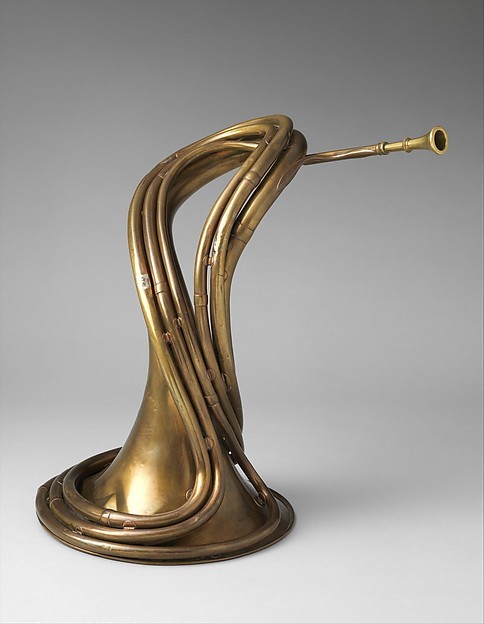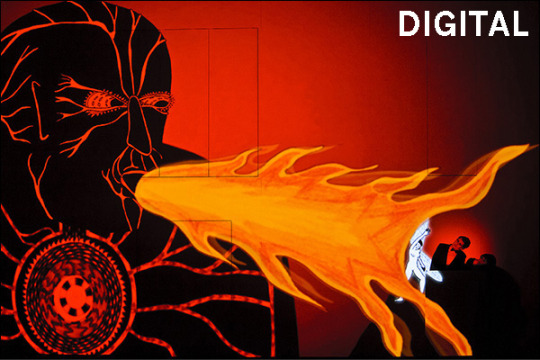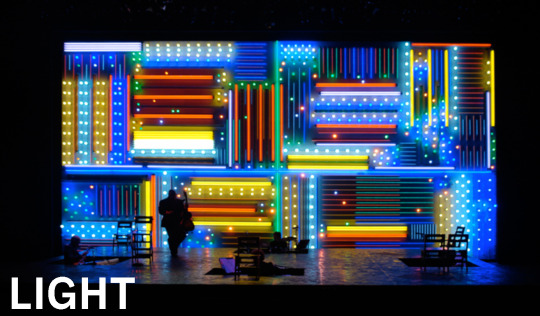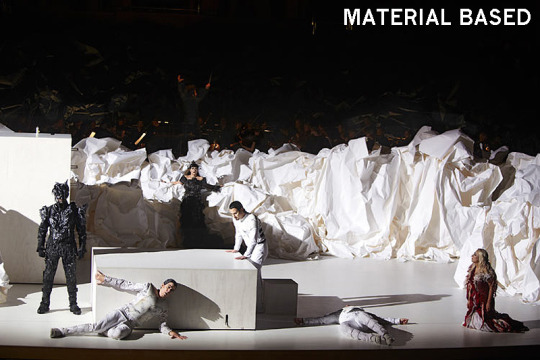Don't wanna be here? Send us removal request.
Video
youtube
(via Chick Corea -Spain(Full Orchestra) - YouTube)
a suggestion post courtesy of @that-one-faun
10 notes
·
View notes
Photo





“Celebrating Sax: Instruments and Innovation” exhibition at The Met… or aka the horrific past of brass
14K notes
·
View notes
Link
The entire site is an interesting resource, but this table is especially fascinating: wide range of pitch standards (from A=376.3 to A=570.7!) throughout Europe & the US, from the 1600s through 1800s.
37 notes
·
View notes
Photo










Today scenic design is taught and classified into two types… Box Sets & Unit Sets.
I would like to propose additional scenic design classifications (which can be viewed above and are listed below). Each week I will focus on a different classification. Now, some of these can be combined and it could even be debated that some of these “classifications” are the same but, by redefining the terms we use as designers, artists and theater practitioners we can further develop what scenic design is, can be and will be as the theater progresses.
Got a question, comment, thought? Hate it? Love it? Think I’m a fool? Got something to contribute? I want to hear from you! Let’s get a discussion going!
Atmospheric: “Tartufe” - Katrin Brack
Box: “Venus in Fur” – John Lee Beatty
Green: “Bloody Bloody Andrew Jackson” – Donyale Werle
Digital: “The Magic Flute” - Esther Bialas
Found Space: “The Drowned Man” – Felix Barrett, Livi Vaughn & Beatrice Minns
Installation: “Death of a Salesman” – Narelle Sissons
Light: “Passing Strange” – David Korins
Material: “Don Giovanni” – Frank Gehry
Motion Based: “Replacement” - Barbara Ehnes
Unit: “Ragtime” – Derek McLane
Follow me at www.scenicdesign.tumblr.com for more updates, photos and scenic design…
- Bryce Cutler
8K notes
·
View notes
Photo




Over the last week, you’ve probably heard a lot about @nasa‘s Kepler space observatory. We made a handy guide to why this mission has been so amazing.
399 notes
·
View notes
Note
Huskies and sounds
❤❤❤
Thanks anon for whatever prompted this :)
1 note
·
View note
Photo



Violoncello, ca. 1700 Anton Posch (Vienna, Austria)
- Materials: [Unlisted] - Body Length: 81.1 cm • String Length: 73.5 cm - Strings: 5 - Other Notes: The standard length of modern ‘cellos is 75 cm, and often older, larger instruments will get cut down. This one was not, and is the largest ‘cello in The Orpheon Foundation’s collection (possibly of all, as their site suggests).
Source: Orpheon.org
965 notes
·
View notes
Photo

Happy 100th Birthday, Milton Babbitt! (May 10, 1916 – January 29, 2011)
27 notes
·
View notes
Audio
https://soundcloud.com/tom-kersey/flood-chamber-2016-05-06
1 note
·
View note
Photo

Just Announced! Tom Kersey - cellist and composer @ The in Tampa, FL - April 2nd
0 notes
Text
Five Fun Facts for the 2015 Geminid Meteor Shower
The Geminid meteor shower peaks this weekend starting on Sunday, Dec. 13. Here are a few fun facts:
Fact #1:

The Geminid meteor shower can be seen from both the Northern and Southern hemispheres. Because they are pieces of an asteroid, Geminid meteoroids can penetrate deeper into Earth’s atmosphere than most other meteor showers, creating beautiful long arcs viewable for 1-2 seconds.
Fact #2:

Geminids are pieces of debris from an object called 3200 Phaethon. It was long thought to be an asteroid, but is now classified as an extinct comet.
Phaethon’s eccentric orbit around the sun brings it well inside the orbit of Mercury every 1.4 years. Traveling this close to the sun blasts Phaethon with solar heat that may boil jets of dust into the Geminid stream. Of all the debris streams Earth passes through each year, the Geminid shower is the most massive. When we add up the amount of dust in this stream, it outweighs other streams by factors of 5 to 500.
Fact #3:

Because they are usually bright, many people say Geminid meteors show color. In addition to glowing white, they have been described as appearing yellow, green, or blue.
Geminid meteoroids hit earth’s atmosphere traveling 78,000 mph or 35 km/s. That may sound fast, but it is actually somewhat slow compared to other meteor showers.
Fact #4:

Geminids are named because the meteors seem to radiate from the constellation of Gemini. The shower lasts a couple of weeks, with meteors typically seen Dec. 4-17, peaking near Dec 13-14.
Fact #5:

The Geminids started out as a relatively weak meteor shower when first discovered in the early 19th century. Over time, it has grown into the strongest annual shower, with theoretical rates above 120 meteors per hour.
Join In:
This Sunday, Dec. 13, our Marshall Space Flight Center in Huntsville, Alabama, will host a live tweet chat highlighting the 2015 Geminid meteor shower. This online, social event will occur 11 p.m. EST Dec. 13, until 3 a.m. EST on Dec. 14. To join the conversation and ask questions, use #askNASA or @NASA_Marshall.
Make sure to follow us on Tumblr for your regular dose of space: http://nasa.tumblr.com
2K notes
·
View notes
Photo



Happy birthday to French composer, ornithologist, and scarf model Olivier Messiaen!
Born on December 10, 1908, Messiaen was a renowned synaesthete – he experienced colors associated with particular musical notes and chords, and even wrote in the margins of his scores which colors the performers should try to evoke when playing his music.
One of Messiaen’s most famous pieces is the Quartet for the End of Time (Quatuor pour la fin du temps). Written while Messiaen was a prisoner in a German POW camp during World War II, the quartet is a powerful meditation on nature and spirituality. Listen to it here.
(Photo sources: Monday Evening Concerts; PBS; Classical Archives)
315 notes
·
View notes
Quote
Tonality and modality are no more than words in a dictionary. They are of practical use but by no means indispensable. If you look at history, you’ll see that after birdsong, which imitated rain, the oceans and the noise of storms, people began to sing in octaves and fifths, according to the natural distribution of voices; then came modes – pentatonic modes from China, diatonic ones from Greece and chromatic ones from India. This modal language was used for centuries, because tonality as such didn’t emerge until Bach’s day, when it was merged with a highly modal and chromatic language. Before him, Monteverdi and Gesualdo were highly chromatic, just as Mozart was after him. If you like, tonality proper has existed for only two centuries, and Beethoven strikes me as the only composer who is frankly tonal. With Chopin and even more with Debussy, this famous tonality becomes veiled once again. Beyond these concepts, the only phenomenon inherent to the world of sound and which composers have to take into account is resonance.
Olivier Messiaen, from an interview with Jean-Christophe Marti, January 1992 (via homilius)
474 notes
·
View notes
Audio
Composer: Olivier Messiaen (1908 - 1992)
Work: Noël from Vingt regards sur l'enfant-Jésus (1944)
Performer: Pierre Laurent Aimard
110 notes
·
View notes







